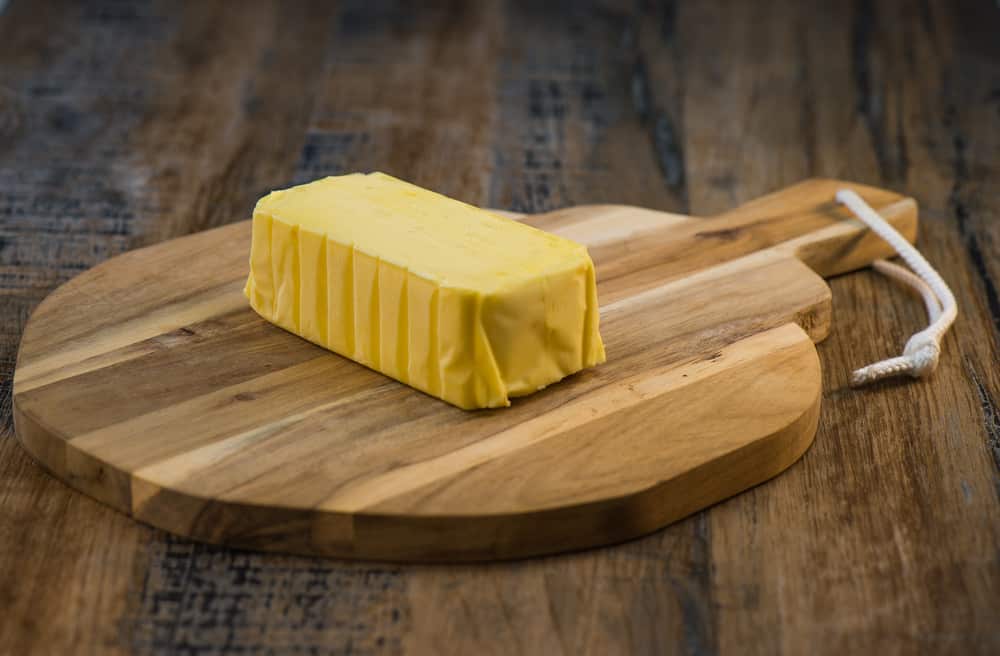
Unsalted butter is one of the preferred choices of chefs and bakers because it provides higher control over the salt percentage as well as the flavor of the recipes. For the same reason, they hardly have salted butter in the pantry, and end up cooking something that requires salted butter. As a result, they ask, “how much salt do you add to unsalted butter?” So, with this article, we are sharing how you can salt up the butter in case you only have unsalted butter.
How Much Salt Do You Add To Unsalted Butter?
Adding Salt To Unsalted Butter
If you are using regular butter, it’s needless to say that there will be a slight amount of salt. On the other hand, if you are using the original unsalted butter, there won’t be any salt, and you’ve to add some salt on your own to complete the recipe’s flavor. Having said that, to add salt to the unsalted butter, you have to add ¼ tsp. of salt for every butter stick, and it will be enough to challenge the butter.
Keep in mind that how much salt you add to the unsalted butter will directly influence the flavor and overall texture of the recipe. With this section, we are sharing how you can add salt to unsalted butter because it’s important to use the correct steps;
- First of all, the unsalted butter has to be brought to room temperature until it’s fully soft (liquid form from the stick form)
- Once the butter is soft, you need to transfer it to the mixing bowl and add salt, as mentioned. If you don’t remember, you have to add ¼ teaspoon of salt for one stick of unsalted butter
- Now, just mix up the salt properly, and your salted butter is ready
On the other hand, if you are worried that the butter will be too salty, you can start by adding less salt than ¼ teaspoon of salt. In addition, you can always taste the butter to make sure if the taste meets your preferences, and you can always add more salt. You’ve to remember that you can add more salt to the unsalted butter, but you cannot take out salt from the butter, so start with less salt and be careful.
In addition to this, you have to be extremely careful while heating the butter because a little bit of carelessness will result in burnt butter. Also, you have to stir the butter continuously to ensure it doesn’t get burnt from the sides. On the other hand, there are many people who consider which is the best salt to use salting up the unsalted butter, and we have information on that.
To begin with, you cannot use the salt with bigger flakes, including kosher salt. This is because the salt must be fully dissolved in butter, and the flaky salt won’t dissolve properly. For this reason, you should opt for table salt and fine salt to ensure fully dissolved salted butter. In addition to proper dissolving, it will be easier to measure table salt, resulting in properly salted-up butter.
If you are thinking that heating will dissolve the flaky salt, you need to remember that you cannot heat the butter for a long time, or else it will burn down. So, just stick to fine salt as it will only take a few seconds to mix up in the melted and soft butter.
Importance Of Adding Salt To Unsalted Butter
First of all, many people add salt to the unsalted butter to improve the flavor or overall saltiness of the butter. Also, it’s a great way of increasing the shelf life of your butter, but it’s still best to refrigerate the butter to make sure the taste and quality are retained. In fact, the salted butter can also be put in the freezer, and it will be fine for over a year.
The Bottom Line
To summarize, you have to follow the rule of thumb of adding only ¼ tsp. of salt to one stick of the old regular unsalted butter. But again, don’t forget to be precise about the salt addition and make sure you don’t add too much. So, when will you try out this DIY method of salting up the butter?